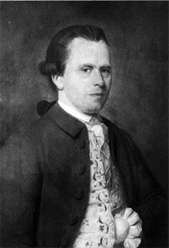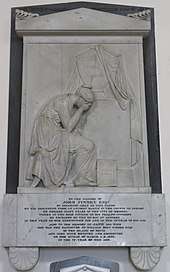John Pinney
John Pretor Pinney (1740–1818) was a merchant from Bristol who owned multiple sugar and slave plantations on the Island of Nevis in the Caribbean.

At the age of 22 Pinney inherited land in South West England, and several slave plantations on Nevis, from his cousin John Frederick Pinney. Between 1765 and 1769 he enslaved 66 people on these plantations. Later, he would enslave between 170 and 210 people at his 394 acre plantation 'Mountravers', producing sugar and rum to be shipped to Bristol and London.[1]
Pinney increased his wealth by setting up a company with a "pro-slavery pamphleteer", James Tobin. They owned ships, loaned money to plantation owners, and took over plantations and slaves from those who could not pay their debts.[2]
Pinney was one of the richest Bristolians at that time, having earned about £340,000 (around £17 million today). His son Charles inherited his father's estate, and when slavery was finally abolished throughout the British Empire, Charles received almost £36,000 (almost £1.8 million today) in compensation from the British government.[3][4]
In his lifetime Pinney brought two enslaved people to Bristol: Frances (Fanny) Coker, and Pero Jones, who Pero's Bridge is named after.[5]
His house at 7 Great George Street is now a museum.

References
- "John Pinney: a plantation owner". www.discoveringbristol.org.uk. Retrieved 2019-08-14.
- "Bristol and the South West | Historic England". historicengland.org.uk. Retrieved 2019-08-14.
- "John Pinney sugar merchant". Discovering Bristol. Discovering Bristol. Archived from the original on 2019-08-14. Retrieved 2019-08-14.
- "Summary of Individual | Legacies of British Slave-ownership". www.ucl.ac.uk. Retrieved 2019-08-14.
- "Blood on the Bricks: More than Colston? | Stories". Bristol Museums. Retrieved 2019-08-14.